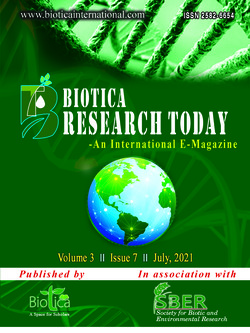
Integrated Pest Management Strategies of Ginger: A New Experience
Mukesh Sehgal*
ICAR- National Research Centre for Integrated Pest Management, Pusa Campus, New Delhi, Delhi (110 012), India
Meenakshi Malik
ICAR- National Research Centre for Integrated Pest Management, Pusa Campus, New Delhi, Delhi (110 012), India
Ardhendu Chakraborty
Krishi Vigyan Kendra, Chebri, Khowai, Tripura (799 207), India
DOI: NIL
Keywords: Ginger, IPM, Pest, Spice
Abstract
Ginger, Zingiber officinale is a perennial root crop that is cultivated in almost all parts of India. The crop is commercially grown for its aroma, and its rhizomes are used both as a spice as well as for medicinal purposes. A number of limiting factors were reported in production and productivity but one of the major constraints in healthy ginger cultivation and storage due to the activity of many key pests in the field as well as in storage. It is also rife with pests which include soft rot, yellows bacterial wilt, leaf spot, storage rot, root-knot nematodes, shoot borer, rhizome scale, pigweed and swine cress, etc. The purpose of this study is to focus on eco-friendly, environmentally safe, economically viable Integrated Pest Management (IPM) strategies, which can minimize the level of infestation and enhance the farmer income.
Downloads
not found
